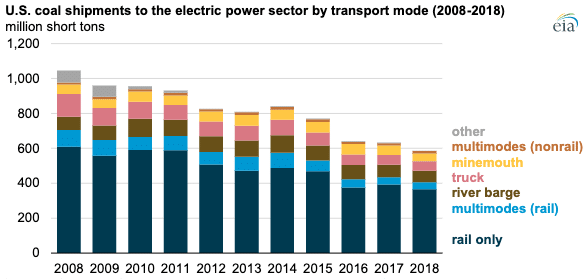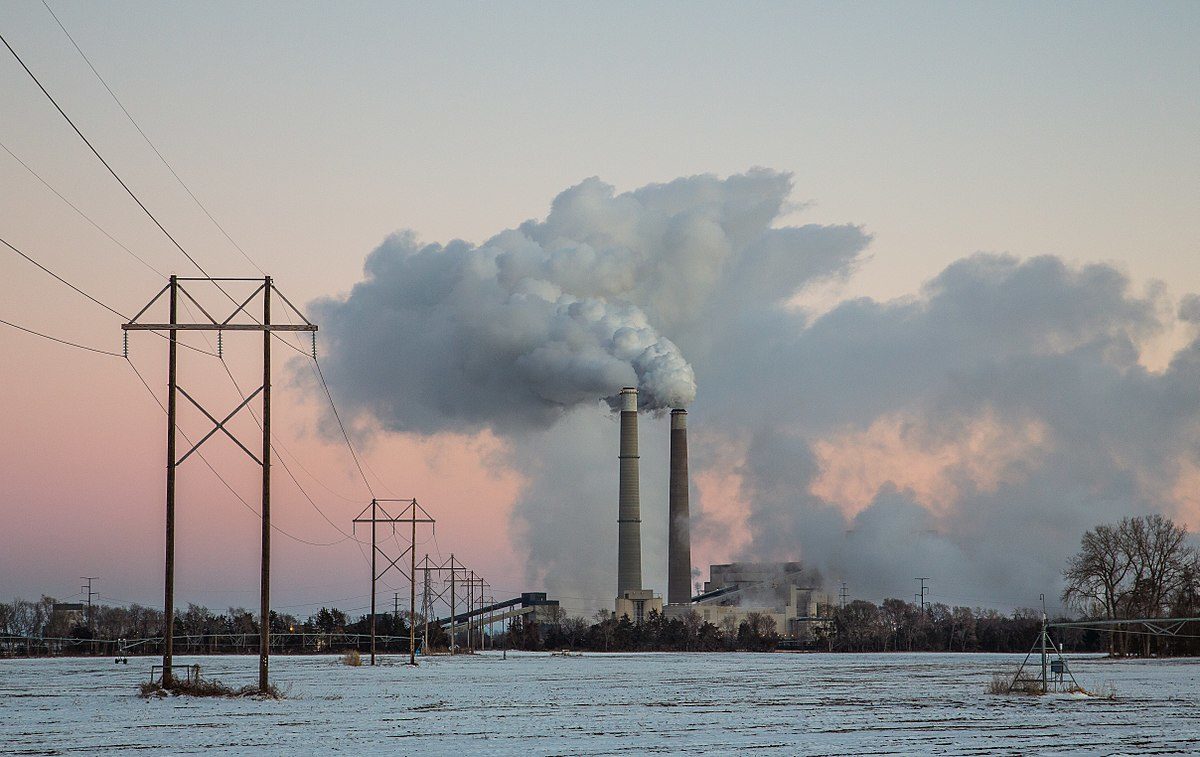Two and a half years ago, Bob Murray was hugging Energy Secretary Rick Perry, and giving him an “action plan” to save the U.S. coal industry. Today the coal company he founded is filing for bankruptcy, and he will be stepping down as president and CEO.
Murray Energy, which has been described by S&P Global Market Intelligence as the largest privately held coal company in the United States, voluntarily filed for Chapter 11 bankruptcy in federal courts this morning. In a press statement, the company noted that this allows it to enter into a restructuring support agreement with lenders who own the majority of $1.7 billion in claims.
The company’s main operating subsidiaries have joined the parent company in filing for Chapter 11 bankruptcy.
Crisis in U.S. coal
Coal has been falling as a share of electricity generation in the United States for decades. Even before the rise of wind and solar as significant contributors to the electricity mix, cheap fracked gas was eating coal’s lunch, and the capacity factors of coal plants have fallen sharply, undermining their economics.
These economic realities have been reflected in infrastructure choices. While the United States has put online a truly massive amount of gas-fired power plants in the last 20 years, the nation’s fleet of coal-fired power plants have been shutting down, and new ones are not being built to replace them.
Fewer plants running less means less coal being shipped. According to the U.S. Department of Energy less than 600 million short tons of coal were shipped to the U.S. power sector last year, the lowest volume since 1983.

And despite an increase in coal exports, companies along the value chain of U.S. coal have felt the heat. Murray Energy is the sixth major U.S. coal company to file for bankruptcy this year, following on three others in 2017 and 2018.
Renewables vs. gas
The decline of coal presents opportunities for wind, solar and battery storage, but these are only opportunities. So far most of the market share that coal has relinquished has been filled by cheap natural gas from shale plays in Appalachia, Northern Louisiana, Texas and across the front range of the Rocky Mountains.
As always, geography plays a role. While utilities in the West such as PacifiCorp are increasingly planning rapid retirements of coal and to replace these plants largely with renewable energy, much of the nation’s coal capacity is not in the West, but rather in the South, Midwest and Mid-Atlantic Region.
Many of these regions are not as windy or sunny as the West or the Plains States, meaning that productivity is lower and the levelized price of electricity from solar and wind are higher, making it harder to compete with cheap gas. Regardless, in much of the United States, solar and wind are still the least expensive forms of new generation per unit of electricity delivered.
But even where wind and solar could cost-effectively replace coal-fired generation, utilities and regulators are often tipping the scales in favor of gas. Numerous examples include Michigan regulators declining to seriously consider alternatives to a gas-fired power plant that DTE Energy chose to build, Entergy hiring actors to fake support for a gas plant (and boo solar), and New England’s grid operator proposing measures that would hinder the participation of renewable energy in the region’s wholesale market.
There are other situations where utilities and state legislatures. In a famous example, Duke Energy has released modeling that fails to even consider the option of shutting coal plants early, and then there is the coal and nuclear bailout which recently passed in Ohio.
In the end, superior economics alone will not allow solar, wind or battery storage to realize its potential in capturing the market share vacated by coal. It will require a policy environment which does not throw up barriers to participation of renewable energy. So while the bankruptcy of coal companies is good news for the energy transition, it is just the beginning.
This content is protected by copyright and may not be reused. If you want to cooperate with us and would like to reuse some of our content, please contact: editors@pv-magazine.com.









EIA data shows that coal consumption has fallen 13% this year, but coal production has only dropped 5%. There is a world of hurt still coming for the coal business.